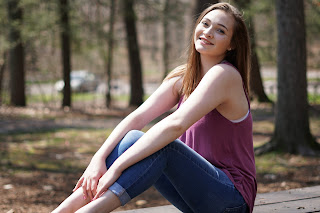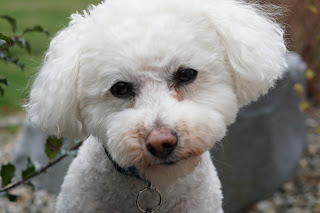The first one would be where you have the model stand facing away from you and have them look over their shoulder:
The second one would be one that I use most often, standing either at a side angle or straight ahead with the model's hands on her/his hips and the knees bent slightly:
The third would be along the same lines as the second, but the model hooks their thumbs in their belt loop:
The fourth one you have the model sit criss cross applesauce on the ground and they can either leave their hands in their lap, or pose their arms such as Emily is below:
The fifth brings the knee bend back, but the arms/hands are resting on the legs instead of on the hips:
The sixth tip would be to have the model pose with their surroundings, below we used a picnic table and a budding flower tree:
Lastly, try to have the model relax their joints as much as they can so that they don't appear to be too stiff.



































